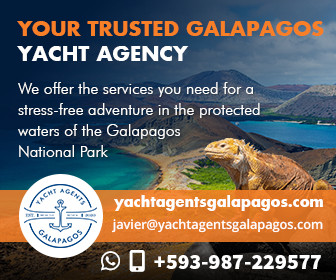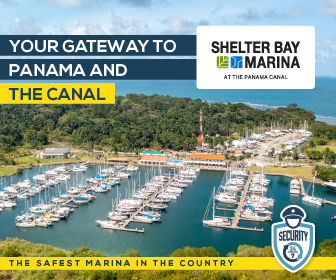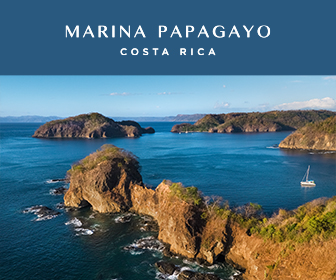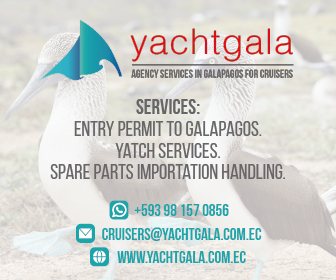Our Visit to Bocas Del Toro, Panama
Published 13 years ago, updated 5 years ago
We arrived at Bocas Del Toro, on the Caribbean side of Panama in January 2010.
If you are entering Panamanian waters for the first time, contact “Bocas Del Toro Port Authority” on VHF channel 16 when you are very near Bocas Del Toro. The Port Authority officers speak English and Spanish, and monitor the radio 7/24.
We approach the port via the Canal De Bocas Del Toro. Our two cruising guides and several sets of electronic charts noted numerous buoys in the canal. In reality, we never saw a single buoy. Traveling in the canal using electronic charts was straight forward and the canal had plenty of deep water. We also had deep water south and east of Bocas Del Toro.
Several days after our arrival a local citizen told us that the Canal De Bocas Del Toro buoys were moved to the Boca Del Drago channel, which is now considered the primary shipping channel for the area. We anchored in 20 feet of water at 09°19.981 north and 82°14.697 west. This location offers a short dingy ride to the fuel docks and main business district.
Clearing In
Make sure you are flying the yellow “Q” flag when you approach Bocas Del Toro. This signals the Port Authority that you will be clearing into Panama and it makes it easy for the government employees to locate your boat. One boater stated that several years ago he was fined for not flying the Q flag upon arrival from outside of Panama.
Our Panama cruising guides and information from the web stated that we should tie-up at the Port Authority concrete pier upon arrival. This is not true. The pier at the Port Authority office has been badly damaged and can no longer be used.
In theory, to clear-in, you should call the Port Authority on VHF Channel 16 and they will coordinate the four governmental officials who will visit your vessel upon arrival. The four visitors will include Immigration, Customs, Port Authority, and Quarantine representatives. They all arrived at the same time in a panga and the initial paperwork was completed on our vessel in a timely manner. All representatives spoke English and Spanish. During our visit, the Port Authority never answered our channel 16 VHF calls.
After the officials leave your boat you must go to “the bank” (there is only one on the island and you cannot wear a hat or sunglasses while inside of it) to purchase your Tourist Stamps. Purchase one $5 and one $10 USD stamp for each person entering the country. Next, walk three blocks down the road to the airport and meet with an Immigration officer. He/she will update your passport and complete a tourism form.
Next, walk to the Port Authority office and pay $193 USD for your Cruising Permit. When you complete this last step and have your Cruising Permit in hand you are free to roam the country!
Normal Government business hours are 08:00 to 16:00, Monday through Friday for Immigration, Customs and Quarantine and 07:30 to 15:00, Monday through Friday for Port Authority.
All the paperwork was completed on our vessel. FYI, the Quarantine official never asked us a single question, and none of the governmental officials left YOLO’s cockpit to look around our vessel, although, officially, a boat inspection is required.
We were not asked to declare guns, ammunition, illegal drugs, pets, spear guns/slings, etc. The Customs Declaration form did ask us to declare fruits, plants, meats, foods, soil, birds, snails, and other live animals. We check the “Yes” box with no further questions or consequences.
Fees
Fees can pe paid in United State dollars (paper bills) and the United States or Panamanian coins. Panama does not have Panamanian paper bills. Bocas Del Tora has one bank and several ATMs and they dispense U.S. Dollars.
A total of US$90 was paid for clearance plus US$15 per person which is good for 90 days. If you plan on being in Panamanian waters for more than 90 days you should get a Mariner’s VISA, not a Tourist VISA. The Mariner’s VISA is good for six months and costs US$25 per person. If you want to stay longer than six months, you must leave Panama for three or more days, with or without your vessel, before returning to Panama to start the clock over again. A crusing permit costs US$193 and is good for one year.
Clearing Out – Get a Zarpe
The zarpe costs US$13.50 if issued by the Port Authority during normal business hours, after hours it will cost you US$33.50. The Bocas Del Toro Port Captain stated that his office requires the issuing of a Zarpe when your next port of call is inside OR outside of Panama. According to several cruising guides and information on the web, you do not purchase zarpes when travelling between Panamanian ports since the Cruising Permit gives vessels nationwide coverage. Several cruisers noted that they were fined $27 and endured additional red tape because they did NOT get a zarpe between Panamanian ports. The Bocas Del Toro Port Captain stated, “A vessel which ignores the zarpe requirements can be fined up to $500 USD and be held in port during a governmental investigation.”
You get your zarpe just before leaving the port. Go to the Port Authority office with your ship’s paper and your Panama Cruising Permit. The Port Captain will then complete five forms and give you a copy of the zarpe.
After nornal hours Immigration, Port Authority, Vessel, Customs, and Quarantine fees double, and the Tourist VISA and Cruising Permit fees remain the same. According to the Port Captain, it is unlikely that a yacht will be cleared in or out during night-time hours. Instead, government officials will visit the vessel the following morning.
Documents
Ship’ papers: 3 copies.
Passports: 4 copies of the identification page and 1 copy of the page with the last port of call Immigration stamp.
Crew List; 4 copies.
Despacho/Zarpe: from the last port.
We were asked to make 3 copies of several of the forms completed by the officials who visited YOLO.
Security
We felt that personal property security issues were extremely high at Bocas Del Toro. According to local cruisers the theft of money, computers, radios, dingies, dingy motors, fuel cans, and other valuables occur almost daily. The thefts are committed in all of the waters near Bocas Del Toro and in the nearby marinas. The local police and government agencies view the thefts as victimless crimes since it only impacts the rich yachties. According to several cruisers, “The police and the local marina operators did nothing when the crimes were reported.” If you are caught stealing goods and are under the age of 16 years old you are exempt from prosecution in Panama.
Since theft goes unchecked in this part of the world, the criminals have increased their attacks. Most items are stolen at night. The criminals steal items located outside vessels, inside lockers, and inside vessels. Computers, cash, and other valuables have been stolen from the inside of yachts at night, even when the vessels were occupied! The criminals are now using crowbars and bolt cutters to break into non-occupied vessels at night. One long term single-hander in the area now takes ALL valuables with him when he goes to shore at night. Dinghies which are lifted out of the water and tied on deck have also been stolen in the middle of the night.
At this point, many cruisers are locking themselves and their valuable property inside their vessel each night, with defensive strategies in mind to repeal nighttime criminals. Many boaters return to their vessels before dark. Personal attacks are few and far between. Most occur during the night time in “back street” locations.
Goods and Services
Bocas Del Toro, Panama is less expensive than most Caribbean islands/nations. During our visit, a U.S. gallon of gas was $3.92 and diesel was $3.59 USD. A 2-liter bottle of Coke was $2.00, a loaf of wheat bread was $1.88, and a quart of milk was $1.25 USD. A case of local beer (24 cans) was $13.50 USD. Many of the local bars will sell you a cold beer for $1 USD. A good variety of goods and services are available within a very short walking distance in Bocas Del Toro. You can buy diesel at the marina at Bocas Del Toro. You have to travel several miles on Bocas Del Toro to purchase gas at a gas station. However, gas and diesel are available at the nearby Cayo Carenero fuel dock.
It is common for the community to run out of everyday items. You never know what will be in short supply. For example, during our brief stay, the community ran out of bananas, gasoline and bacon.
Dinghy Dock: Most cruisers use the floating dock located at The Pirate restaurant and bar. The Pirate is located just south (about 1,000 feet) of the Bocas Del Toro telecommunications tower.
Garbage Disposal: Use the large trash drums located along the main street near The Pirate for free. Or, many of the local marinas will accept your trash for $1 USD per bag.
Potable Water: Longtime residents drink the water from the tap. Some people suggest that visitors drink only bottled water. Many cruisers take on free water when making a purchase at the local fuel docks. Most sailor filter and treat the water dispensed at the fuel docks and marinas.
Local Cruiser Net: Most cruisers in this area monitor VHF channels 16 and 68. A healthy number of cruisers sail the waters around Bocas Del Toro. The morning cruising net is at 07:45 on VHF channel 68 and typically provides variable information.
Additional Comments
Bocas Del Toro is like Key West, Florida in the 1960s. The small community is truly international in flavour, backpackers roam the streets, and dozens of youth hostels, small hotels, and restaurants line the streets. If you like bar hopping you can visit a bar every day for two months straight and never sit in the same establishment twice! Most people walk or use a bicycle to get around town. Surfers, divers, and fishermen enjoy the local waters.
During our brief stay in early January, it rained one or more times every day. Locals noted that it rains more than 10 feet per year in this part of the world!
Our cruising guides noted that the two Cayos Zapatilla islands (Numero Uno and Numero Dos) were part of the Isla Bastimentos marine park, and travellers could visit them free of charge. When we anchored off Numero Uno late in the day were approached by two park rangers in a small boat. Each ranger stated in Spanish that the fee for visiting the marine park was $10 USD per person per day. We decided not to fight city hall, raised our anchor, and voted with our sails.
About 25 miles east of Laguna De Bluefield (the eastern portion of the Bocas Del Toro area) is Isla Escudo De Veraguas. We anchored at 09°05.321 north and 81°34.008 west in 15 feet of water in great holding (sand) and clear water. We took advantage of the calm seas and near zero winds to clean the bottom of YOLO. We briefly explored the isolated beaches and rock formations of this small island before the no-see-ems drove us back to the boat. Bug spray was required to fend off the insects on board YOLO during sunset and sunrise. Several cruisers noted that during their visit to Isla Escudo De Veraguas they were approached by a local in a small boat and were required to pay a $10 USD per night “anchoring fee.” Nobody asked us for compensation during our visit.
The clearance fees associated with visiting Panama are the highest in the Caribbean Sea, based on our experience of visiting over two dozen countries. We paid a total of $313 USD, just to clear into Panama! This amount is the minimum you will pay, whether you are visiting for one day in transit or are staying for 90 days. Zarpes and canal charges will certainly drain significantly more dollars from our cruising kitty in the weeks to come.
Jason and Karen Trautz
S/V “YOLO” (You Only Live Once)
Related to following destinations: Bocas del Toro, Caribbean, Panama







